| Andere Namen | Papierschneidemesser, Papier-Guillotine-Klingen, Guillotine-Messer, Guillotine-Maschinenmesser |
|---|---|
| Herkunftsort | China |
| Anwendung | Kunststoff, Papier, Karton, Film, Folie, Etiketten, Verpackung, Wellpappe, Zeitschriften, Bücher |
| Material | 65Mn,9CrSi,Cr12MoV,SKD-11,HSSl |
| Modell-Nr | GP-GB |
| OEM-Service | Verfügbar |
| Zahlungsbedingungen | L/C, T/T, Western Union |
| Paket | Kartonschachtel, in Holzkisten |
| Lieferzeit | 7-20 Tage |
Teilen mit:
Guillotine blades, also known as guillotine knives or straight cutting blades, are long, straight cutting tools used in guillotine cutters or shearing machines. These machines are designed to make straight, precise cuts across a wide range of materials, most commonly paper, cardstock, and thin boards in the printing and paper converting industries, but also metals, plastics, and other materials in industrial shearing applications. The term “guillotine blades” refers to the straight blade or set of blades that descend in a shearing motion to cut the material held firmly in place.
Guillotine blades are essential tools in various industries for making clean, straight cuts. Key applications include:
The materials used for guillotine blades must be durable, wear-resistant, and capable of maintaining a sharp, straight cutting edge to ensure clean and accurate cuts over extended use. Common materials include:
The blades are precision ground and often hardened and tempered to achieve the optimal balance of sharpness and durability. The bevel angle of the cutting edge is critical for the specific material being cut, ensuring a clean shear without tearing or crushing.
Guillotine blades are typically long and straight, but variations exist in their edge profiles and overall design depending on the application and the material being cut:
The working principle of guillotine blades involves a powerful downward shearing motion against a stationary bed or anvil. The material to be cut is held firmly in place by a clamp, and the sharp, straight blade descends with significant force, cleanly severing the material. The length and thickness of the blade, the angle of the bevel, the force applied, and the rigidity of the machine all contribute to the quality and accuracy of the cut. Proper sharpening and alignment of the guillotine blades are essential for optimal performance and safety.
Willkommen zu Anfragen!
If you don’t find the shear blade you are looking for, we can also customize it, see our „Kundenspezifische Klingen” to learn how!
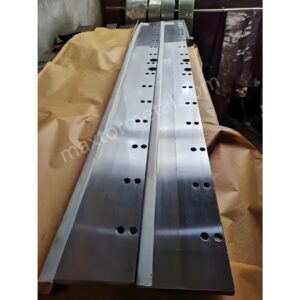
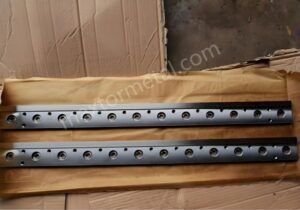

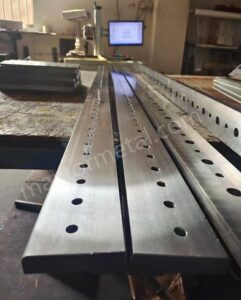
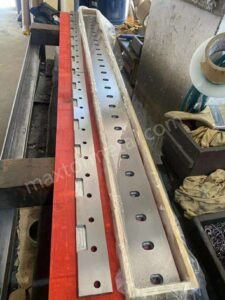
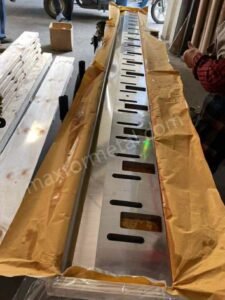
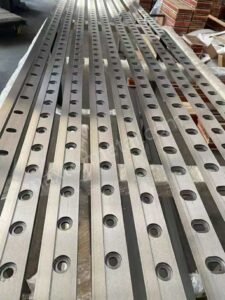
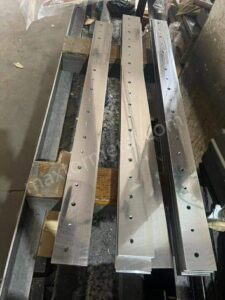
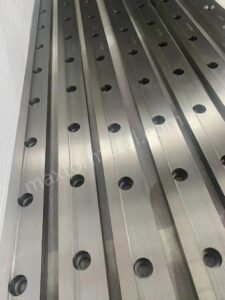
Genießen Sie den Komfort des Imports. Vom Transport bis zur Zollabfertigung kümmern wir uns um den gesamten Prozess. Sie müssen nur die Mehrwertsteuer zahlen und warten, bis die Waren beim Unternehmen eintreffen.
Wir haben gesehen, wie seine Klingen in unzähligen Anwendungen eingesetzt wurden, und sind bereit, jedes Projekt zu bewältigen, das Sie uns stellen – mit Genauigkeit, Haltbarkeit und unübertroffen wettbewerbsfähigen Preisen.
Ob Sie Zeichnungen, Skizzen oder Muster liefern, wir können für Sie zeichnen und fertigen. Wir können Ihnen auch dabei helfen, bestehende Designs und Spezifikationen zu ändern, um nahezu jede industrielle Werkzeuganwendung zu verbessern. Bitte kontaktieren Sie unser engagiertes Vertriebsteam, um Ihre spezifischen Anforderungen zu besprechen.
Zur Kontrolle der Qualität werden eine Reihe von Tests und Kontrollen durchgeführt, darunter die Erstmusterprüfung, die Prüfung eingehender Materialien und zertifizierter Materialien, die Qualitätskontrolle während des Prozesses und die Endqualitätsprüfung.
Egal, ob Sie Importeur, Händler, Großhändler oder Endverbraucher sind, Sie sind bei uns herzlich willkommen – mit minimaler Mindestbestellmenge, ohne lästige Anfragen und mit mehr Freiheit beim Einkauf.
Werden Sie Ihr exklusiver Monitor und übertragen Sie regelmäßig alle wichtigen Knoten in der Produktionslinie, egal wie weit sie entfernt sind. So haben Sie den Produktfortschritt so weit wie möglich im Blick!
Nanjing Metal Industrial CO., Limited
Mingjue-Industriepark, Lishui, Nanjing, Jiangsu, China
Bleiben Sie mit unseren neuesten Nachrichten auf dem Laufenden.